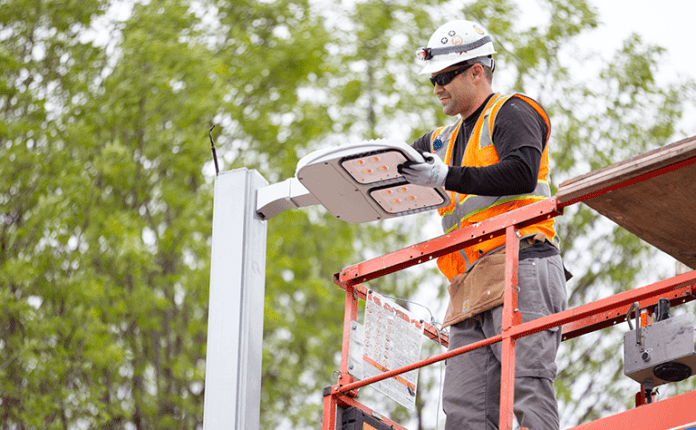The installed base of smart street lights is forecasted to surpass 31.2 million at a global level by 2013, according to a new research report from the IoT analyst firm Berg Insight.
The Swedish firm said that the installed base of smart street lights was 10.4 million at the end of 2018.
According to the study, the global smart street lights market is expected to expand at a compound annual growth rate (CAGR) of 24.5% during the 2018-2023 period.
Europe is leading the smart street lighting market, accounting for nearly 40% of the installed base. The North American market, which has more street lighting owned by utilities, has seen a more scattered uptake of smart street lighting but is nevertheless home to several of the world’s largest deployments, Berg Insights noted. North America accounted for around 30% of the global installed base in 2018.
The rest of world accounted for 31% of the global installed base in 2018, with China representing a large portion of these installations.
The study also showed that the world’s leading smart street lighting vendor is U.K.-based Telensa, which accounted for 14.4% of the global installed base of connected endpoints in the first quarter of 2019. Included in the top three are also Signify and Sensus. Together, these three vendors account for a third of the global installed base of individually controlled smart street lights, Berg Insight said.
U.S.-based Itron is also a leading player in the networking segment, having acquired Silver Spring Networks in 2018, the Swedish firm added. Other important smart street lighting vendors include Rongwen Energy Technology Group from China; CIMCON Lighting, Acuity Brands, Current, LED Roadway Lighting and DimOnOff from North America; Lucy Zodion and SSE from the U.K.; Reverberi Enetec from Italy; Flashnet from Romania and Telematics Wireless from Israel.
“While various proprietary RF mesh or star networks today account for the majority of smart street lighting installations, the adoption of LPWA technologies such as NB-IoT and LoRa is now growing fast, particularly in the European and Asian markets”, said Levi Ostling, IoT analyst at Berg Insight. The analyst added that in line with this development, the smart street lighting market is currently undergoing significant transformation and is now entering a new era of competition where the success of vendors will be determined by their ability to establish themselves as competitive providers of communications and management platforms for smart city devices.
“Finding new ways to monetize data from a variety of smart city sensors and devices will be essential for smart street lighting vendors in the next couple of years to avoid becoming mere vendors of commoditised hardware,” Ostling added.

